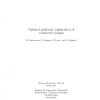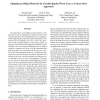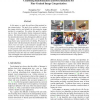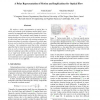CVPR
2011
IEEE
13 years 7 months ago
2011
IEEE
In this paper, we present a novel approach to recognizing human actions from different views by view knowledge transfer. An action is originally modelled as a bag of visual-words ...
CVPR
2011
IEEE
13 years 7 months ago
2011
IEEE
Training of conditional random fields often takes the form of a double-loop procedure with message-passing inference in the inner loop. This can be very expensive, as the need to...
CVPR
2011
IEEE
13 years 7 months ago
2011
IEEE
CVPR
2011
IEEE
13 years 7 months ago
2011
IEEE
The performance of an offline-trained classifier can be improved on-site by adapting the classifier towards newly acquired data. However, the adaptation rate is a tuning parame...
CVPR
2011
IEEE
13 years 7 months ago
2011
IEEE
In this paper, we study the problem of fine-grained image categorization. The goal of our method is to explore fine image statistics and identify the discriminative image patche...
CVPR
2011
IEEE
13 years 7 months ago
2011
IEEE
Many computer vision tasks can be formulated as labeling problems. The desired solution is often a spatially smooth labeling where label transitions are aligned with color edges o...
CVPR
2011
IEEE
13 years 7 months ago
2011
IEEE
Multi-view stereo methods reconstruct 3D geometry from images well for sufficiently textured scenes, but often fail to recover high-frequency surface detail, particularly for smo...
CVPR
2011
IEEE
13 years 7 months ago
2011
IEEE
Recently the sparse representation (or coding) based classification (SRC) has been successfully used in face recognition. In SRC, the testing image is represented as a sparse lin...
CVPR
2011
IEEE
13 years 7 months ago
2011
IEEE
Image-based location estimation methods typically recognize every photo independently, and their resulting reliance on strong visual feature matches makes them most suited for dis...
CVPR
2011
IEEE
13 years 7 months ago
2011
IEEE
We explore a polar representation of optical flow in which each element of the brightness motion field is represented by its magnitude and orientation instead of its Cartesian p...





